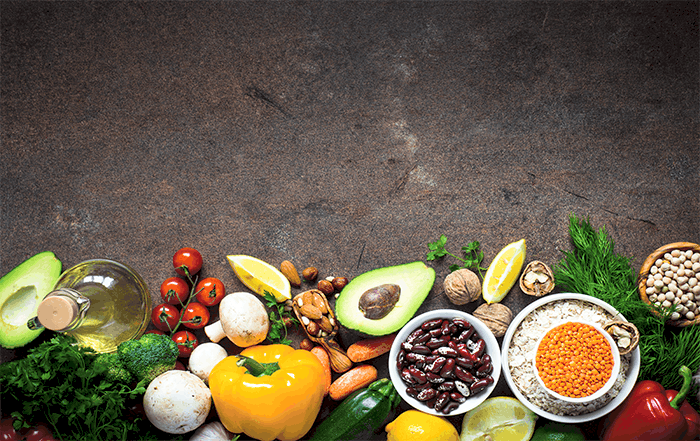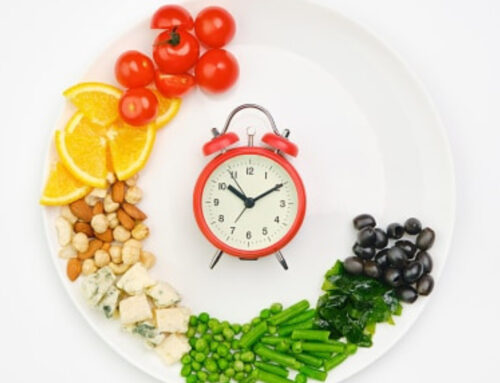Keeping your hormones balanced can have a profound effect on your physical and emotional health. While estrogen gets a lot of focus for most women, today I want to tell you about how balancing your progesterone levels can have a dramatic effect on your hormonal health.
No matter what time of life you are in, progesterone is a key hormone you need for your brain and body to function well.
Progesterone is your anti-anxiety hormone.
Without proper amounts of progesterone, you may find yourself with these symptoms:
- Trouble sleeping
- Irritable
- Overwhelmed
- Quick to react to stress
- Irregular cycles
When you turn 30, your body starts making less and less progesterone. Worse yet, if you are living a high-stress life and have cortisol constantly surging through you, your body will use the precursor to progesterone to make more cortisol and you will be left with extremely low levels of progesterone.
For many women, this is the root cause of their hormonal issues.
But the good news is that there are many strategies you can apply to get your body to start making more progesterone again!
One of those strategies is to eat foods rich in the nutrients your body needs to make progesterone. Specifically, these are foods packed with vitamins C, E, and B6, plus minerals and amino acids.
And the really cool part of feeding your body these nutrients is that many of you who are following a ketogenic diet may have been leaving these critical foods out.
Like mangoes! They’re packed with vitamin C, B6, and magnesium! A triple threat!
Here are some of my top recommendations for foods you should be adding to your diet to give your body the nutrients it needs to make more progesterone.
Magnesium
- Black beans
- Dark leafy greens
- Nuts and seeds
- Brown rice
- Dark chocolate
Vitamin B6
- Walnuts
- Grass-fed beef
- Poultry
- Bananas
- Spinach
- Beans
- Potatoes
- Sunflower seeds
- Pistachio nuts
- Turkey
Vitamin C
- Yellow peppers
- Kale
- Kiwi
- Broccoli
- Oranges
Zinc
- Veal liver
- Grass-fed beef
- Crabs
- Dark chocolate
- Chickpeas
- Pumpkin, watermelon, and squash seeds
- Grass-fed beef
- Cashews
L-Arginine
Protein-rich foods contain L-arginine
- Turkey
- Chicken
- Pumpkin Seeds
- Peanuts
Vitamin E
- Almonds
- Sunflower seeds
- Fish (trout)
- Plant oils (olive oil)
Here are a couple of important things to remember as you add these foods into your diet:
1. Always go organic
Pesticides are a major contributor to estrogen dominance. Estrogen and progesterone have an inverse relationship; when estrogen goes high, it forces progesterone to go low and vice-versa. Be sure to always choose organic foods when possible.
2. Raw foods have more nutrients
With nuts, seeds, and vegetables, it’s best to consume them raw. Once you cook them, you begin to break down the nutrients, making them less available for progesterone production.
3. Grass fed, hormone-free meats are best
The meat from grass-fed animals contains more of the essential fatty acids that help make progesterone. Essential fatty acids include Omega-3, 6, and 9. Meats that are not organic will contain antibiotics and hormones that will add to estrogen dominance and low progesterone.
Herbs are another tool you can use to raise your progesterone levels. Helpful herbs include:
- Dong Quai Emerging research is proving that Dong Quai helps support the brain’s acetylcholine/memory processes.
- Humulus lupulus keeps your estrogen levels balanced by helping your liver metabolize estrogen.
- Phlomis umbrosa is a traditional Chinese medicinal herb that supports the body’s natural estrogen/progesterone balance, receptor sensitivity, and normal natural human growth hormone activities.
- Vitex agnus-castus, derived from the chaste berry tree, helps naturally balance progesterone levels. Chasteberry has been proven to improve low progesterone levels in more than 60 years of clinical research, including five randomized trials.
One of my absolute favorite products for women who are perimenopausal or menopausal is Femicrine. It has the right combination of the above herbs and can help raise progesterone levels better than any supplement I have ever seen.
Now that you understand the power of progesterone and its effects on your moods, you can begin eating the foods that will help you build an adequate supply of this miraculous hormone.
Because women have different nutritional needs at different times of the month, I created a Ketobiotic Reset for Women to guide you through a full month of your natural hormonal cycle.
After Day 14 of your cycle (that’s when your body needs the most progesterone!), this reset helps you to add the above nutrients to your diet so your progesterone levels don’t dip low and increase your anxiety, hot flashes, insomnia, and weight gain.
To get free information on how to do the Ketobiotic Reset for Women follow this link: https://drmindypelz.com/ketobiotic-reset-for-women/
Hope that helps! As a perimenopausal woman, I can honestly say that the above strategies have not only been a life saver with my own health but are helping the women I am personally coaching in my clinic.
If you have any questions about this Reset, you can find me on Facebook in my Resetter Tribe or email me directly at drmindypelz@familylifewellness.com.
Cheers to amazing health and a hormonally balanced you!
Dr. Mindy









Thank you Dr Mindy. This us so helpful. I’m 69, female and have started your alternative Day Keto/Hormone building protocol. I’m just wondering though, are alternate days long enough to build up hormones? What’s your view on natural/bio identical Progesterone
I’m interested in looking at some of the research you sited around vitex for women still menstruating and post menopause.